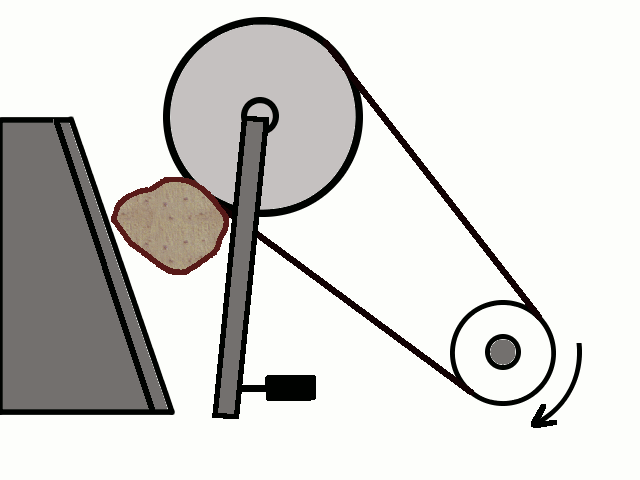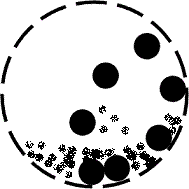 The single most common reason for an increase or drop in the production of fines is the WORK INDEX of the ore. If you remember, the work index of the ore is a method of measuring the degree of hardness. As the ore becomes harder the fracture lines in the rock become cleaner or sharper with less crumbling of the face and edges of the mineral. These fracture lines are developed in the ore as it proceeds from one stage of production to .the next. When the ore is blasted from the earth a certain amount of fracture lines are developed in the rock. These lines are very definite and many are visible with the naked eye. When the ore is deposited in the first crusher the machine will take advantage of these lines and by applying force compress the rock until it breaks at the lines. The crushed rock that is produced will now contain fine fracture lines caused by this compression. The next stage of crushing will again take advantage of those lines and break the rock some more. This in turn creates more lines which are finer still.
The single most common reason for an increase or drop in the production of fines is the WORK INDEX of the ore. If you remember, the work index of the ore is a method of measuring the degree of hardness. As the ore becomes harder the fracture lines in the rock become cleaner or sharper with less crumbling of the face and edges of the mineral. These fracture lines are developed in the ore as it proceeds from one stage of production to .the next. When the ore is blasted from the earth a certain amount of fracture lines are developed in the rock. These lines are very definite and many are visible with the naked eye. When the ore is deposited in the first crusher the machine will take advantage of these lines and by applying force compress the rock until it breaks at the lines. The crushed rock that is produced will now contain fine fracture lines caused by this compression. The next stage of crushing will again take advantage of those lines and break the rock some more. This in turn creates more lines which are finer still.  With each stage of size reduction the fracture lines become finer and finer until they are microscopic in size.
With each stage of size reduction the fracture lines become finer and finer until they are microscopic in size.
Also as the rock becomes smaller it becomes harder to fracture as well. This is the reason that the size of the electric motor for a primary crusher, that has a production rate of five hundred tons per hour, is so much smaller than the horse power of a rod mill that can only grind three hundred tons per hour.
In the harder ore there are less of these fracture lines created with each size reduction. This in turn means that there will be a lot less fine material produced by the time it reaches the fine ore storage. The coarser ore being drier and having more space in between each piece than is normal, will not slow the flow of fine material towards the discharge points as much. This means that when the crushers stop putting ore into the fine ore storage the size ratio of the mill feed will decrease rapidly.
Under these conditions a good line of communication between the crushing operator and the grinding operator will be very helpful. If the crushing operator is going to shut the circuit down for an extended period of time, the grinding operator may have to make some adjustments to his circuit to compensate for the loss of the fine material.
A change in the production of “FINES” may be one indicator of a change in the work Index of the ore, another possible indication is a change in the COLOUR of the ore. If the physical characteristics of the rock (work index) doesn’t remain the same, then the composition of the ore is probably different. As color is one of the main clues in mineral recognition, it would change as well. So again if the feed to the mill begins to change color watch for a difference in the grinding characteristics.
The effects of the work index fluctuating on a grinding circuit can be drastic, especially if the ore becomes harder. The opportunity for an over loaded mill is greater, and poor grinding results are probable. How great an effect that the hardness will have on the grind will depend upon the next two variables, DENSITY and CASCADE.
